These tutorial pages explore, explain and build various Celestial Mechanics simulators using JavaScript.
Source code included with each simulator.
I. JAVASCRIPT ORBIT SIMULATOR
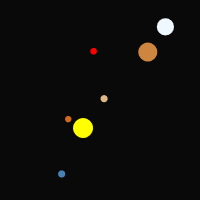 This is the most popular JavaScript tutorial on the website which explains each step in creating a fully functioning Orbit Simulator for the planets in our Solar System.
This is the most popular JavaScript tutorial on the website which explains each step in creating a fully functioning Orbit Simulator for the planets in our Solar System.
The tutorial covers everything from how to use an HTML Canvas to solving for Kepler's Equation.
Complete JavaScript source code included to create your own solar system simulator.
II. JAVASCRIPT ORBIT SIMULATOR SATURNIAN MOONS
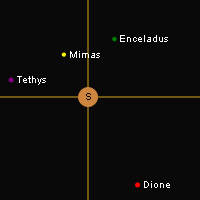 This tutorial takes everything learnt in the the first one and applies it to creating an Orbit Simulator for the Major Moons of Saturn.
This tutorial takes everything learnt in the the first one and applies it to creating an Orbit Simulator for the Major Moons of Saturn.
Code from the first tutorial needs to be changed to make the simulator work for the Satellites of Saturn. Complete JavaScript source code included, which also allows you to create an orbit simulator for the Galilean moons for example.
III. JAVASCRIPT EPHEMERIS SIMULATOR
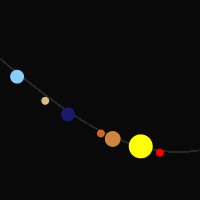 This tutorial shows how to generate Ephemeris for the positions of the planets in our solar system based on a desired input date.
This tutorial shows how to generate Ephemeris for the positions of the planets in our solar system based on a desired input date.
This tutorial also plots the planets on the Celestial Sphere, along the Ecliptic, using RIGHT ASCENSION and DECLINATION.
IV. LUNAR EPHEMERIS SIMULATOR (GEOCENTRIC)
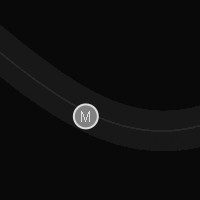 This tutorial shows how to generate geocentric Ephemeris for the Moon based on a desired input date.
So the position of the Moon on a certain date as seen from the centre of the Earth.
This tutorial shows how to generate geocentric Ephemeris for the Moon based on a desired input date.
So the position of the Moon on a certain date as seen from the centre of the Earth.
This tutorial also plots the Moon on the Celestial Sphere. Due to the Moon's orbital tilt of 5.1°, the Moon can appear anywhere in a band of 5.1° above or below the Ecliptic.
V. LUNAR EPHEMERIS SIMULATOR (TOPOCENTRIC)
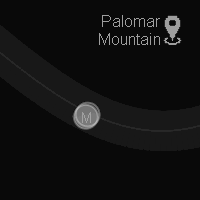 This tutorial shows how to generate topocentric Ephemeris for the Moon based on a desired input date and observer location.
So the position of the Moon on a certain date as seen from a specified location on the surface of the Earth.
This tutorial shows how to generate topocentric Ephemeris for the Moon based on a desired input date and observer location.
So the position of the Moon on a certain date as seen from a specified location on the surface of the Earth.
When calculating the location of the planets in our Solar System, you don't have to take into account the geocentric parallax, as the planets are so far away. But the Moon is an exception, which has a very large parallax (up to 1° parallactic angle).